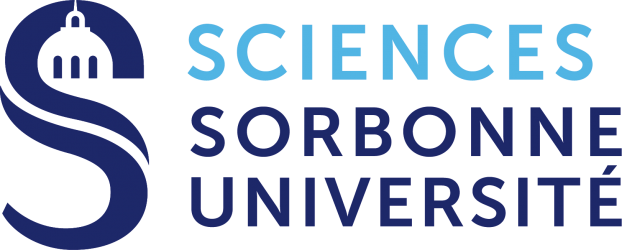Trois contrats doctoraux en neurosciences computationnelles. Deux des trois projets sont déjà financés (ANR), le troisième le sera via Dim-C (Ile de France) ou le concours de l’école doctorale ED3C (Sorbonne Université).
Il s’agira dans tous les cas de modélisation biophysique de réseaux de neurones (à spikes, ou de leur réduction) corticaux (frontal) et/ou sous-corticaux (ganglions de la base, thalamus), afin de rendre compte de fonctions cognitives chez le rongeur ou le singe : encodage du temps (TimeTag), motivation et interactions sociales (varSeek), beta oscillations in cognition (CocoBag).
Il n’y a pas de pré-requis concernant la formation des étudiants (Masters de biologie, maths, physique, chimie, info, interfaces, etc.)
Projet TimeTag (ANR; collab. avec Jérémie Naudé, IGF, Montpellier)Deciding when to act is as important as deciding what to do. Timed decisions require neuronal ensembles to generate precisely timed spikes within the circuits participating to decision-making, in particular the prefrontal cortex (PFC). During interval timing (when animals produce actions separated by precise time intervals in the order of hundreds of milliseconds to seconds), PFC firing activity is the best predictor of action timing, and PFC inactivation perturbs the timing of behavior. However, the precise mechanisms of how time-related PFC neuronal activity leads to timed decisions are still lacking. The TimeTag proposal aims to assess 1) the causal implication of PFC time-related neuronal activity on timed decisions and 2) the biophysical mechanisms underlying PFC time-related neuronal activity.
Projet VarSeek (ANR; collab. avec P. Faure, ESCPI, Paris)Inter-individual behavioural variability refers to differences in the expression of one or more behaviours between members of a population. For instance, some people take more risks and are more interested in immediate gains than others. Theses individual differences shape their interactions, their prospects for survival and their susceptibility to diseases. Such a variability is particularly obvious in the way one responds to environmental and social challenges, resulting in a heterogeneous and idiosyncratic expression of strategies during reward decision making (i.e.,agents find different solutions to the same problem). The systematic biases that make two individuals differ in their strategy imply strong constraints on neural systems. Understanding the neural bases of these constraints in the context of reward seeking is the main objective of this proposal. Rewards are known to have an impact on the organisation of behaviours, especially the construction of goals and the extraction of information about their presence, predictability and accessibility, as well as the many methods and costs associated with their acquisition. How individuals explore their environment to discover new rewards, or focus on their acquired knowledge, is, for example, considered one of the major axes of trait variation, along with activity, boldness, aggressiveness and sociability. Rewards can be either natural, such as food and social interactions, or artificial such as drugs of abuse. The circuits underlying different natural and artificial reward-seeking behaviours are likely to be shared to some extent and as with natural reward seeking there are individual differences in the response to drug. Indeed, despite equal exposure to a specific psychoactive substance, there is ample evidence that not all individuals become addicted to that substance, and that specific decision-making traits such as impulsivity, exploration or novelty seeking, predict vulnerability to drugs. This proposal ultimately aims to decipher, in mice, the neural basis of inter individual differences in reward seeking strategy and the consequence for nicotine susceptibility.
Projet CocoBag (Dim-C/ED3C; collab. avec B. Girard, ISIR, Paris / E. Procyk & C. Wilson, SBRI, Lyon)Recent data pinpoint the implication of beta oscillations (13-35Hz) in cognitive processes. E. Procyk’s team (INSERM, Lyon), with which we collaborate, have acquired a set of electro-physiological data of monkeys performing the self-paced decision-making EE (Exploration/Exploitation) task showing beta oscillations. The goal of the thesis is to improve and use a biophysical spiking model of the cortico-baso-thalamo-cortical loop involved in decision-making in the EE task, to assess the causal relationship between beta oscillations, exploration and explorations phases during cognitive tasks. The Ph.D. will adapt an existing complete loop model already designed and built to assess the causal relationships underlying spiking dynamics, beta bursts and decision-making in frontal loops, within an in silico equivalent of the EE task, including both working memory and reinforcement learning components. To do so, the Ph.D. will adapt the model to create a functional environment mimicking task interactions (input/outputs: cue, actions rewards) and the integration of synaptic plasticity rules to assess learning in monkeys. Plasticity will incorporate DA-reinforced synaptic rules 1) at cortico-cortical synapses, to learn associative attractors of task states representations (PFC) and of meta-learning valuation (ACC), and 2) at cortico-basal synapses to learn task contingencies. Thus, the ultimate goal of the thesis is to use this complete model to explain the evolving dynamics measured during learning of the EE task.
Bruno Delord
Professeur en Neurosciences Computationnelles / Biologie des SystèmesInstitut des Systèmes Intelligents et de Robotique (ISIR), Sorbonne Université
Professor in Computational Neurosciences / Systems BiologyInstitute of Intelligent Systems and Robotics (ISIR), Sorbonne University
4, place Jussieu 75005 Paris CC 173 France
http://people.isir.upmc.fr/delord/
